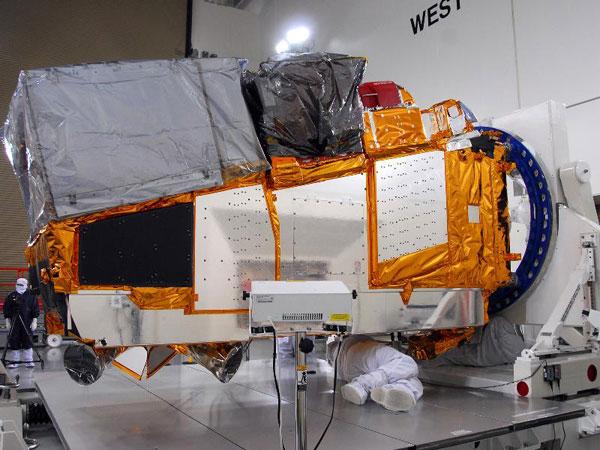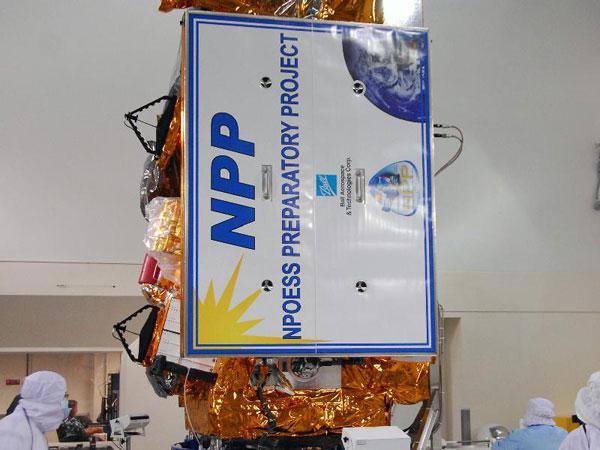NASA to Launch New Satellite to Track Earth's Weather, Climate

A new NASA satellite that will be the first geared at observing key aspects of both Earth's climate and its weather is slated for launch on Oct. 27, the space agency announced today. The National Polar-Orbiting Operational Environmental Satellite System Preparatory Project (NPP) is the first mission designed to collect critical data to improve weather forecasts in the short-term and increase our understanding of long-term climate change.
NPP's five science instruments, including four new state-of-the-art sensors, will provide scientists with data to extend more than 30 key data records that have been kept for decades by a cadre of Earth-observing satellites. These records, which range from the ozone layer and land cover to atmospheric temperatures and ice cover, are critical for understanding and predicting changes in global climate.
"NPP's observations of a wide range of interconnected Earth properties and processes will give us the big picture of how our planet changes," said Jim Gleason, NPP project scientist at NASA's Goddard Space Flight Center in Greenbelt, Md.
"That will help us improve our computer models that predict future environmental conditions," Gleason added. "Better predictions will let us make better decisions, whether it is as simple as taking an umbrella to work today or as complex as responding to a changing climate."

Meteorologists with the National Oceanic and Atmospheric Administration (NOAA) will incorporate NPP data into their weather prediction models to produce forecasts and warnings that will help emergency responders anticipate, monitor and react to many types of natural disasters.
"The timing of the NPP launch could hardly be more appropriate," said Louis W. Uccellini, director of NOAA's National Centers for Environmental Prediction in Camp Springs, Md. "With the many billion dollar weather disasters in 2011, NPP data is critical for accurate weather forecasts into the future."
A Delta II rocket will carry NPP into an orbit 512 miles (824 kilometers) above Earth's surface. Roughly the size of a minivan, the spacecraft will orbit Earth's poles about 14 times a day. It will transmit data once each orbit to a ground station in Svalbard, Norway, and to direct broadcast receivers around the world.
Get the Space.com Newsletter
Breaking space news, the latest updates on rocket launches, skywatching events and more!
NPP is set to launch from Space Launch Complex 2 at Vandenberg Air Force Base in California on Oct. 27. The launch window extends from 5:48 a.m. to 5:57 a.m. EDT. The launch recently was delayed two days due to the repair of the Delta II's hydraulic system. The NPP spacecraft is scheduled to be transported to the launch pad for attachment to the Delta II on Oct. 12.
This story was provided by OurAmazingPlanet , sister site to SPACE.com.
Join our Space Forums to keep talking space on the latest missions, night sky and more! And if you have a news tip, correction or comment, let us know at: community@space.com.
For the science geek in everyone, Live Science breaks down the stories behind the most interesting news and photos on the Internet, while also digging up fascinating discoveries that hit on a broad range of fields, from dinosaurs and archaeology to wacky physics and astronomy to health and human behavior. If you want to learn something interesting every day, Live Science is the place for you.

